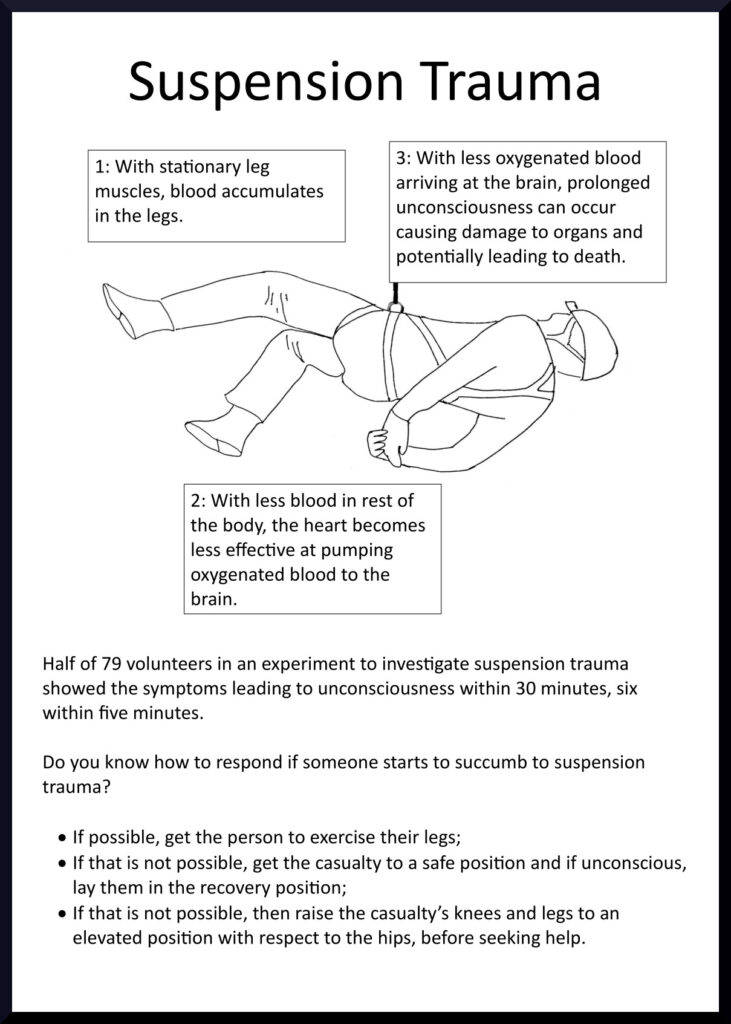Suspension trauma can occur if a caver is suspended in their harness without being able to move (due to injury or loss of consciousness). They should be rescued from the rope with haste and medical attention should be sought.
Why does it happen?
- Normally, movement keeps the blood flowing around the body. However if a person remains stationary in an upright position for too long, fainting may occur, which would normally returns the body to a horizontal position. But if the person is in a harness, then they might not fall to the horizontal position.
- Suspension trauma arises from the accumulation of blood in the legs due to the lack of muscular activity which leads to insufficient blood in the trunk and brain.
Symptoms
- Symptoms include light-headedness, nausea, becoming red in the face, sensations of tingling or numbness of the arms or legs, anxiety, visual disturbance, or feeling an oncoming fainting fit.
Consequences
- If fainting occurs but the body is held with the legs below the waist and trunk by a harness, then the reduced blood flow continues and suspension trauma can occur.
- The reduced blood flow in this situation can cause brain and organ damage and death.
How quick
- Suspension trauma, including death, can occur within as little as six minutes.
Action
- A casualty suspended in their harness who is unable to proceed but is still conscious should be encouraged to move around where possible and take their weight off their harness by standing up in a foot-loop or on a ledge if possible. They should be rescued from their position as rapidly as possible.
- A casualty suspended in their harness who is unconscious should be rescued from the rope to a safe position as soon as possible and then laid in the recovery (safe airway) position.
- If someone is able to get to them but isn’t able to remove them from the situation, then the casualty’s knees and legs should be raised to an elevated position with respect to the hips before help is sought.
- If a person has suffered from symptoms of suspension trauma, then they should seek medical advice immediately after exiting the cave.
All cavers should consider their emergency procedures during caving trips including first aid, summoning assistance from cave rescue and basic SRT rescue techniques to get someone off a rope swiftly.
The BCA Training and Equipment working group would like to raise awareness amongst cavers of suspension trauma in caving and cave rescue situations.

